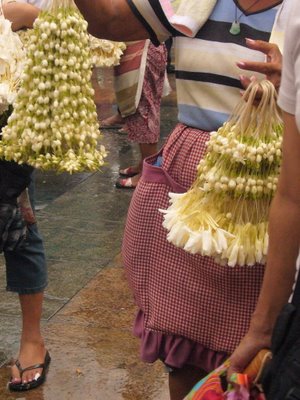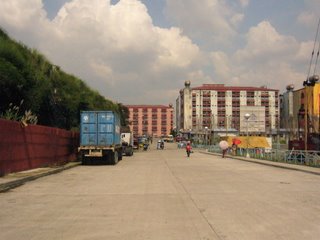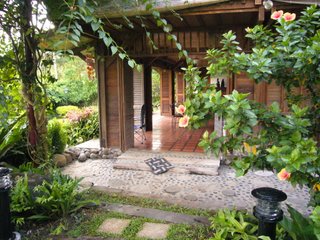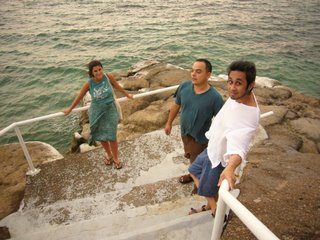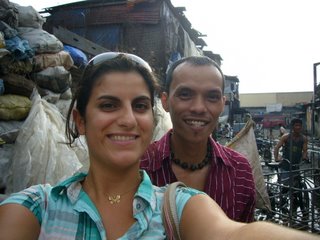

With Philip and David, we headed south today to Paranaque district to visit Bert Guevara, Captain of the Sun Valley Barangay (mentioned in an earlier blog). First we visited the composting operations in a subdivision. There are about 40,000 people living in Sun Valley and all their waste is collected and sorted. In most of Sun Valley, households drop their organic waste in plastic bins at the street corners adding in a layer of coconut dust or sawdust provided by the Barangay. The other waste is collected separately and sorted at local MRFs. Bert estimates that 35% of the waste that would have typically ended up in a landfill is now being re-cycled (the new law on solid waste management asks for a 20% reduction, so Bert is by far a model in a country where less than 1,000 of the 42,000 barangays in the Philippines are actually recycling and implementing MRF strategies).
Bert explains that this initiative was built over the years: he started recycling in his Barangay on a smaller scale in the early nineties. He tells us it takes time and patience and numerous meetings with people before they buy-into environmental initiatives, none of this happened overnight. For now, there is not a huge demand for this compost as they can't guarantee its quality. They give it away or sell small quantities. The operation is very simple: collection is then followed by mixing with sawdust (donated) and bacteria (bought). This mixture sits around in bags in the heat for about 3 weeks; the water evaporates and fermentation takes place. Hopefully it's hot enough to kill most of the bacteria. I should add that there was practically no smell and we were standing right next to the heaps of organic waste. The next step is shredding, using a machine manufactured in the Philippines. They then use sifters to make sure all non-organic materials are removed. About 10 bags of 25kg are produced each day, but for now composting does not have a large market.
Moving to another part of Sun Valley, we visited a larger MRF that collects all types of waste. The organic is treated locally (they include a "washing" process that doesn't make much sense to me, why add water?), the plastics and other recyclables are put to the side for sale, and the non-recyclables are shipped off to the landfill at San Pedro Laguna, probably 35km away. Bert tells us that the trees we see planted here grew up with the MRF. This site is run by the home owners association, barely breaks even, but has managed to reduce operation costs by selling more recyclables and reducing the amount of trucks needed for non-recyclable waste. Plus the people working here have salaries, so there's a job creation aspect.
The next site visit is to a processing facility primarily for PET. PET PET PET, they love it here. They buy, they "clean" (removing labels and chopping off the caps), they crush and bale. They can also make flakes. The profit margin per kg is very low but the volume is huge! They are processing 30 tones a day in this facility and have expanded operations to another site in order to move up to 50T/day. "It's so easy to do business," the manager and partial owner tells us (before stepping into his black-tinted-window Mercedes), "you just compact the PET and they pay us. It's easier than trading gold." We tell him about recycling in Switzerland and he's ready to come over and buy a boat-load from us. They have begun selling to a massive packaging and beverage franchise group here in the Philippines -- they are setting up the first plant for PET to PET recycling, to supply their own business but also others. Apparently these guys will buy PET, pay a good price, and even accept with caps and labels (as you can see in this image of a bale).
I'm taking notes and David is taking pictures, and that's probably why these sorter ladies are smiling at the camera! What a charmer. The women are doing the manual labor, while the men are maneuvering the machinery. No gloves, masks or boots. The manager however has a shiny black pair of wellies. Must match the car!










